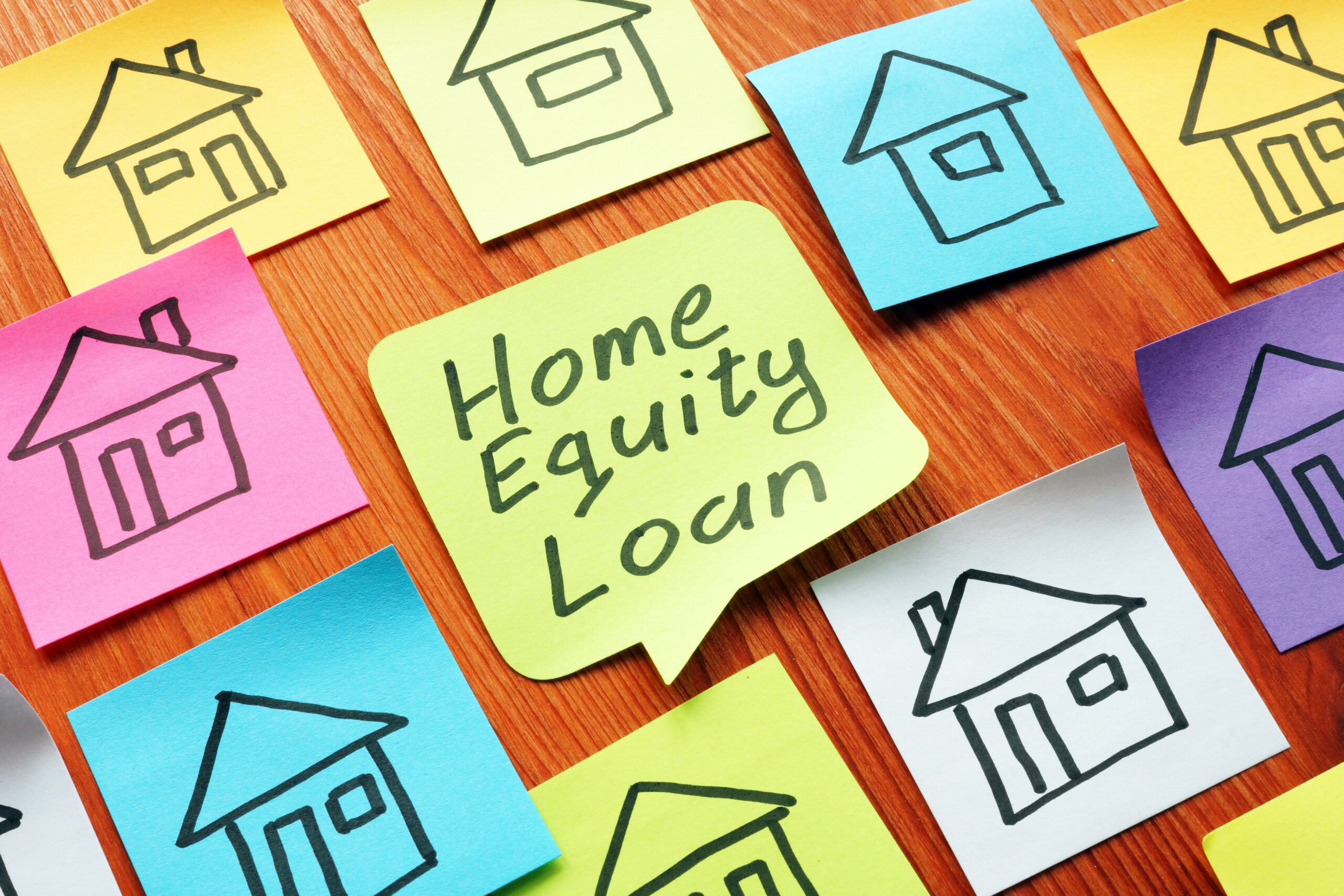Picture this: you come home and pull your electric car into the garage. You plug it into your EV (electric vehicle) charging port before heading inside. It’s unusually chilly today, but you adjusted your thermostat from your phone before you left the office so it’d be a nice, cozy temperature by the time you step through the door. Your vacuum robot flies past you on its way to the docking station, programmed to finish its cleaning by 5:30 p.m. so it’s out of your way once you get home. You ask Alexa to turn on your favorite playlist as you set about making dinner. Suddenly, your phone lights up with a notification—you forgot to shut the garage door behind you. With one tap on your screen, it’s closed.
Thirty years ago, this scene would have seemed like something out of a futuristic sci-fi movie. Now, it’s a realistic scenario in thousands of homes across America. Our houses are rapidly growing smarter as home automation technology becomes more accessible for the average homeowner.
Just How Smart Are Our Homes?
With 41.3 million smart homes, the U.S. has the most smart homes of any country. In fact, the majority of U.S. homes—69%, to be exact—have at least one smart device. What was once a niche category of home improvement for only the most tech-savvy homeowners has become mainstream, with 46% of homeowners saying they want their current or future homes to have smart devices installed.
The smart home options are endless and often overwhelming, with new products hitting the market every day. It can be hard to determine which ones—if any—are worth the investment.
From basic home security systems to cutting-edge kitchen appliances that you can control from your phone, here are the top smart home devices that will make your life easier and your home more secure. Keep an eye out for these smart features when buying a home, or consider adding them to your current home!
Built-In Smart Home Devices
There are hundreds of smart home devices, but not all of them are built-in. For example, while smart speakers (like an Amazon Echo or Google Nest), Roombas, and smart TVs are extremely common, they are not built into the home. These items are personal property, and if the home would sell, the seller would take these items with them.
Built-in smart home technologies, however, are a part of the home itself and therefore would be sold with the home. As a seller, advertise these smart features to your advantage when putting your home on the market. As a buyer, keep an eye out for these gadgets when browsing potential homes—and don’t be afraid to ask your REALTOR® to verify which smart fixtures stay, and which have been reserved by the seller!
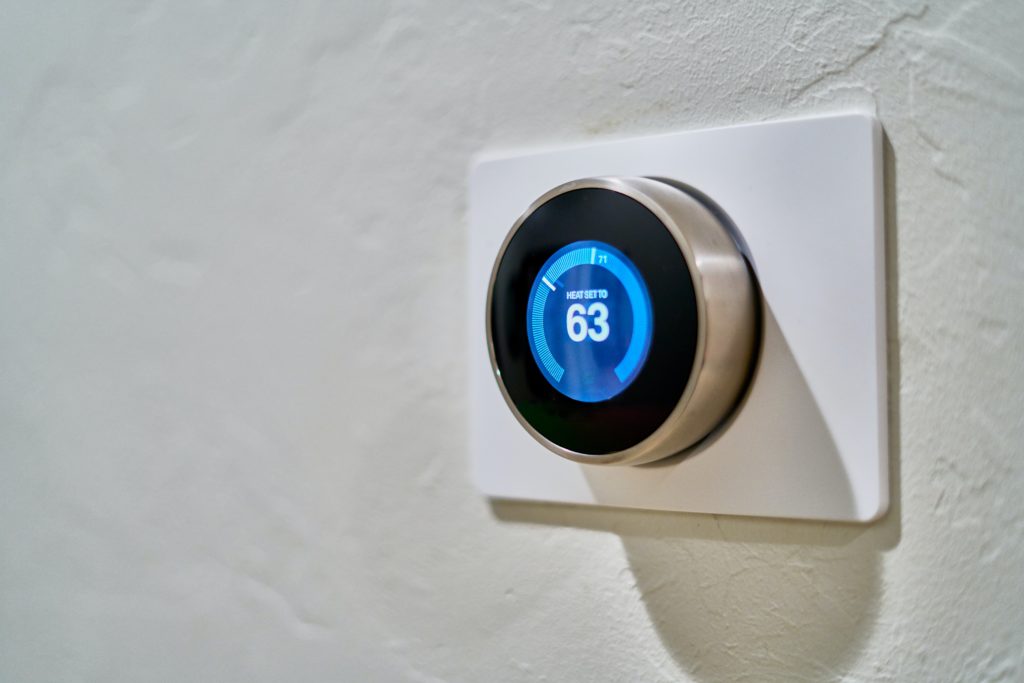
1. Smart Thermostats
A smart thermostat is a thermostat that connects to the Internet and therefore can be controlled by another device such as a phone, tablet, or even Alexa herself. This means you can change the temperature remotely, whether you’re on vacation and forgot to turn the heat down or you’re on the couch and want to make a quick adjustment.
Some smart thermostats also “learn” from your preferences over time and make automatic adjustments. Some have voice control built right in, or can run diagnostics on your heating and cooling system, or remind you when it’s time to change your furnace filter. In other words, they do a lot more than just keep your home at the right temperature.
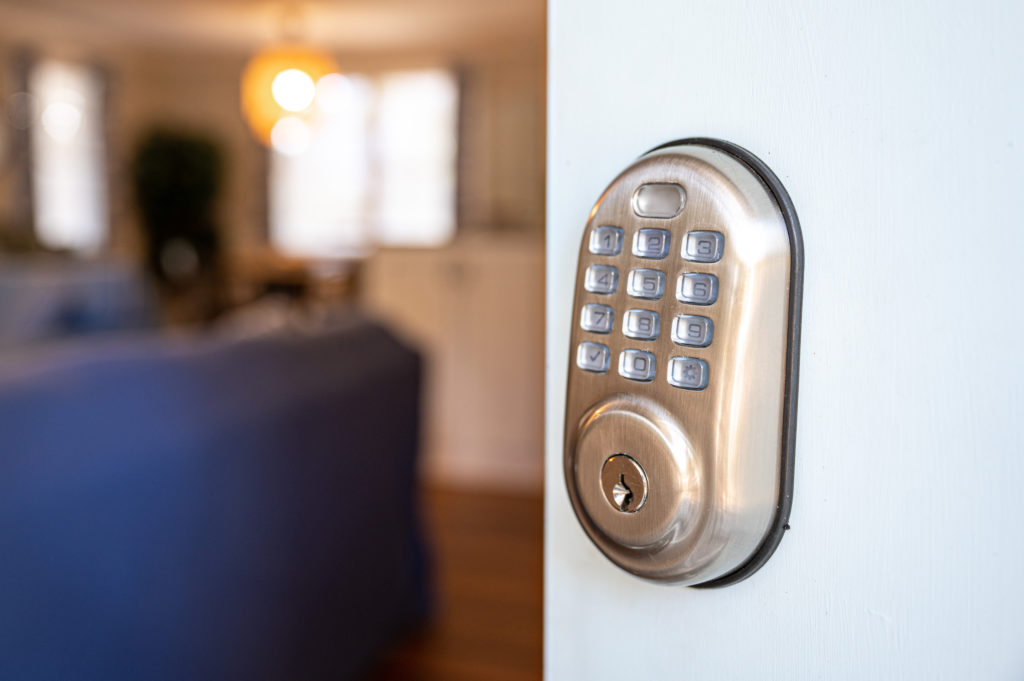
2. Keypad Entry or Keyless Door Locks
Forgot your keys? Need to give someone access to your house while you’re not home? No problem! Keypad entries are a convenient solution to the hassle of physical keys. Much like typing in a password code to unlock your phone, door keypads allow you to type in a code to unlock your home. It’s a lot more secure than hiding a spare key under your doormat!
Many of these keyless door locks come with additional features, like built-in alarms or the ability to connect to the Internet or a smart speaker.
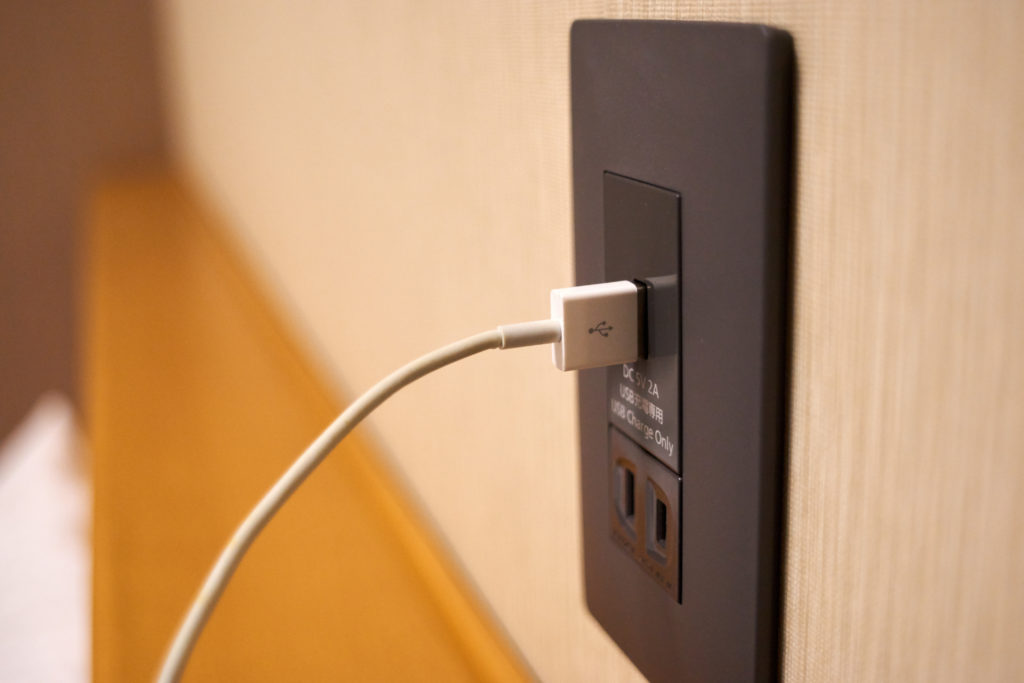
3. USB Outlets
Almost all of today’s small devices—phones, tablets, speakers—use USB cords to charge. Rather than owning several USB wall plug adapters (you know, those boxy little square plugins you keep losing?) many homeowners are opting to cut out the middleman by including USB outlets in their home.
If you don’t want to tinker with the wiring to replace your existing sockets, don’t worry. There are also plenty of charging port options available—mini charging stations that plug in to your traditional outlet that provide both regular and USB plug-in options. Many newer power strips also include USB ports as well.
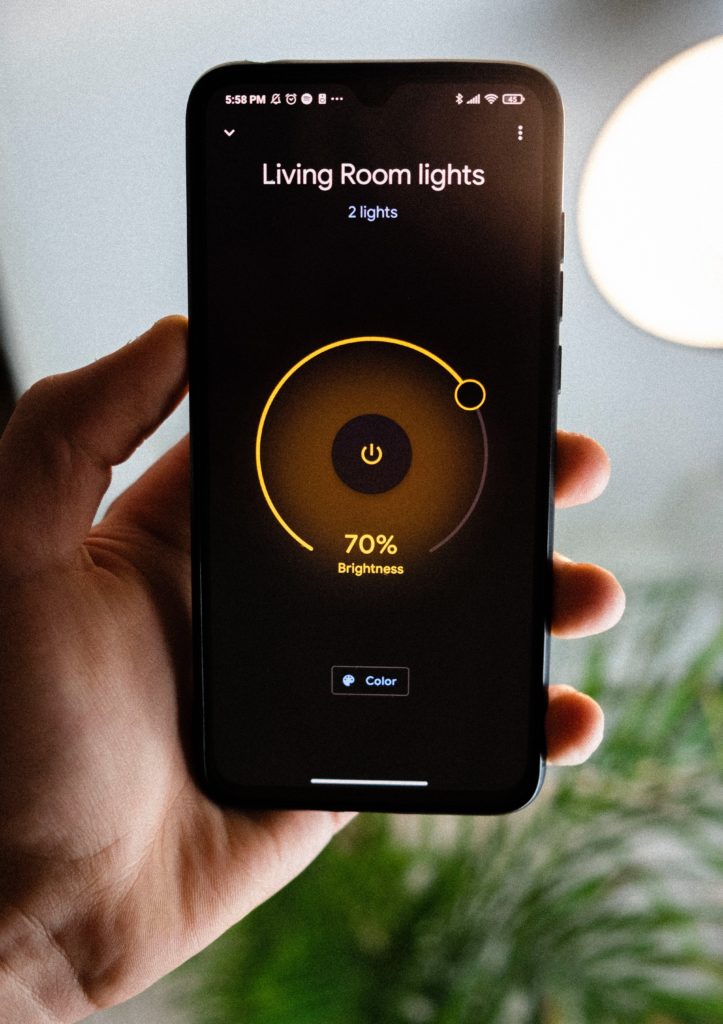
4. Smart Light Bulbs
At some point, all of us have left home in a rush, only to stop and wonder if we remembered to turn off the lights. But what if you could check your phone to see if the lights were off?
Smart bulbs make this possible. They’re LED light bulbs that are able to connect to the Internet or bluetooth devices, meaning you can control them remotely. No more getting out of your warm, comfy bed to turn the lights off at night or to turn them on in the morning. You can do it right from your phone before you even stand up!
Like many smart devices, smart light bulbs do more than connect to the Internet. Many of them have voice-command integrations. Simply connect them to your smart speaker and ask Google to turn the lights on or off for you. They’re also highly customizable—many smart bulbs on the market allow you to change colors depending on your mood or the ambiance you’re going for.
Smart light bulbs are a great example of an IoT product. IoT stands for Internet of Things: physical objects that can connect to other devices over the Internet. Many smart home features fall into this category—smart thermostats, smart TVs, smart garage door openers, and many kitchen appliances.
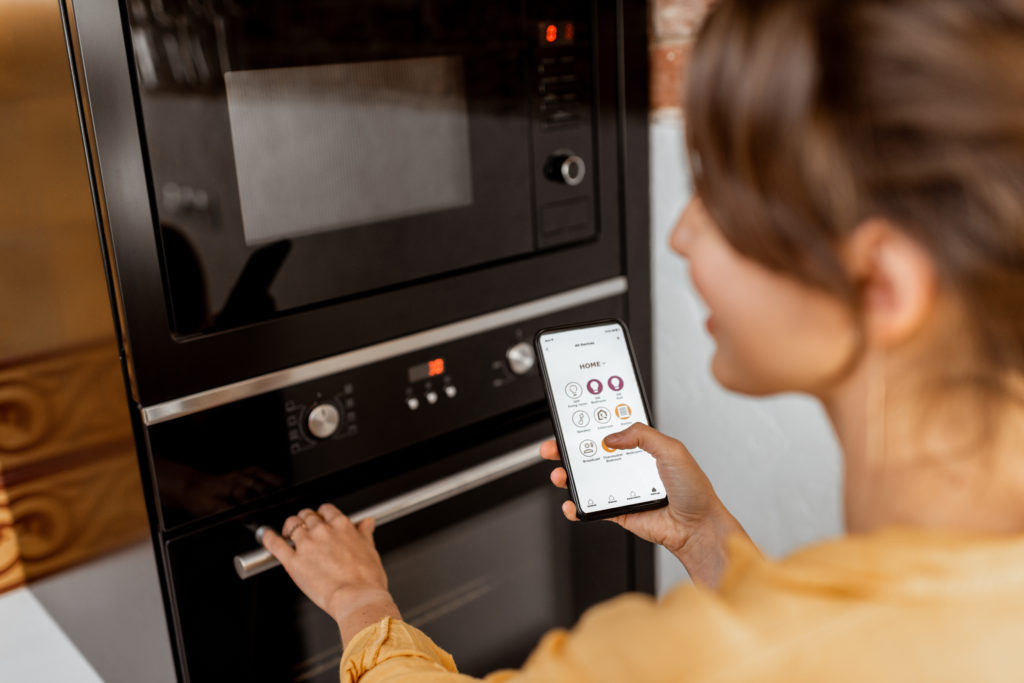
5. Smart Appliances
Kitchen
Refrigerators are by far one of the most popular and advanced smart appliances. Many of them have a tablet-like screen built into one of the doors, which serves as a memo board. Think grocery lists that you can write directly on your fridge!
At the grocery store and can’t remember if you need more eggs? Some smart fridges have a built-in camera, so you can take a peek inside your fridge to check while you’re wandering the grocery aisles.
Want to look inside your fridge for an ingredient without opening it and letting all the cold air out? Smart fridges can do that, too, with transparent panels that let you see inside your fridge.
Smart refrigerators don’t deserve the entire spotlight, however. Other kitchen appliances that can now connect to the Internet or be controlled via voice command include microwaves, dishwashers, and ovens. Imagine asking Google to preheat the oven or to start the dishwasher! Even outdoor appliances—like grills and smokers—can now connect to the Internet to be monitored via our phones.
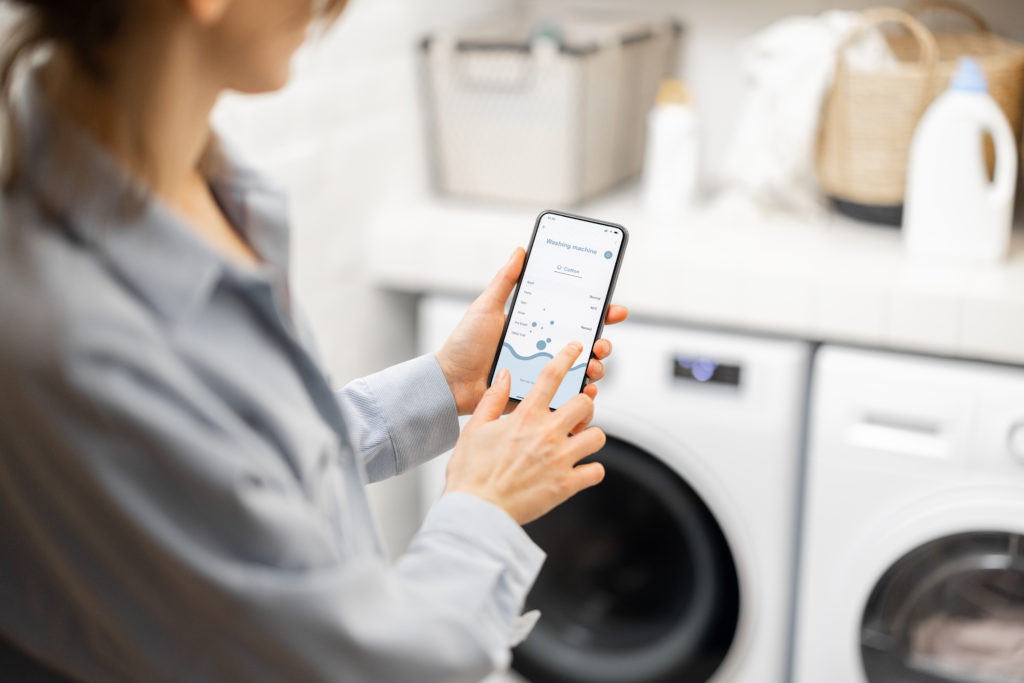
Laundry Room
The kitchen isn’t the only room in the house that has the capacity for smart appliances. If doing laundry is your least favorite chore, then you’re in luck. Smart washers and dryers may not be able to fold and put away your laundry (yet, anyway!), but they do allow you to start, stop, or check on washing and drying cycles from your phone.
If you are building a custom home or plan to remodel your current home, be sure to include Wi-Fi connections in your kitchen or laundry room if you plan to have smart appliances. This will make connecting your appliances that much easier!
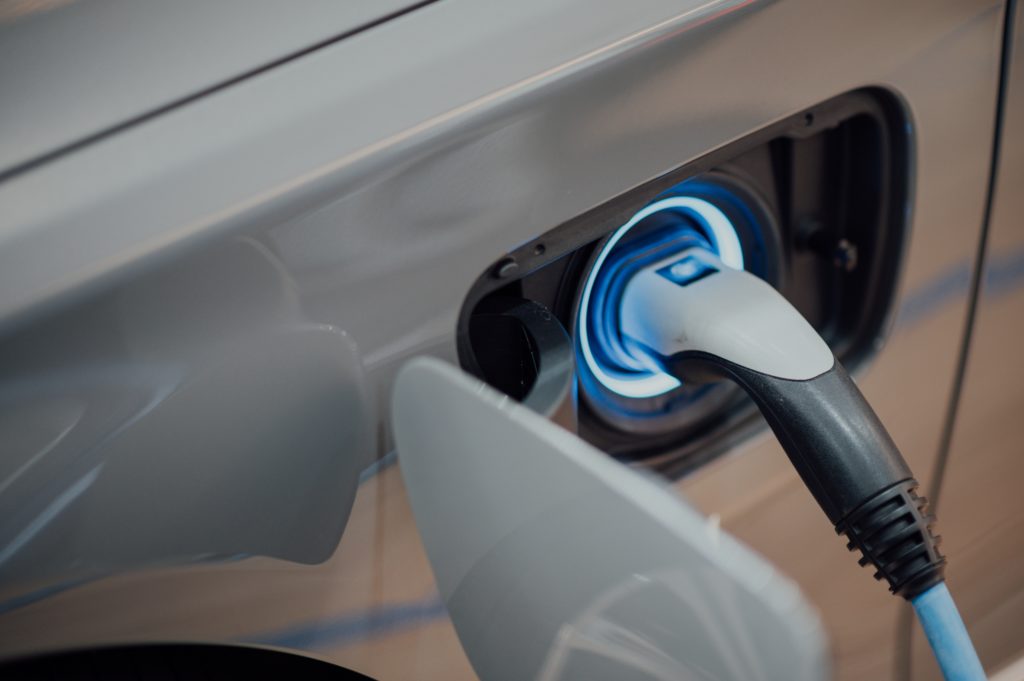
6. EV (Electric Vehicle) Charging Ports
Electric and hybrid vehicles are skyrocketing in popularity. Unlike gas-powered vehicles, electric vehicle owners have the ability to fuel their vehicles at home, with EV plugins built right into their garage.
Higher-end EV charging ports even have smart capabilities. Think scheduling a charging time, sending you reminders to charge, and allowing you to check on charge progress, all from your phone. Like many of these smart appliances, they also connect to smart speakers for voice command capabilities!
One thing to keep in mind with an EV charging system: double check that there is adequate power supply in your garage (or wherever you are installing the charger). While some cars can charge using Level 1 chargers (which run on your average 120 volt outlets that you find all across your home), this type of charging is slow and won’t get you very far (think 3-5 miles for every hour spent charging).
On the other hand, Level 2 EV chargers operate at 240 volts and require a dedicated power supply to pull from. This voltage is most commonly used in at-home chargers, as it doubles the charging speed of a typical 120 volt outlet. In other words, while you may be able to plug your car into your typical outlet, your smart charging port will likely require a dedicated power source of at least 240 volts.
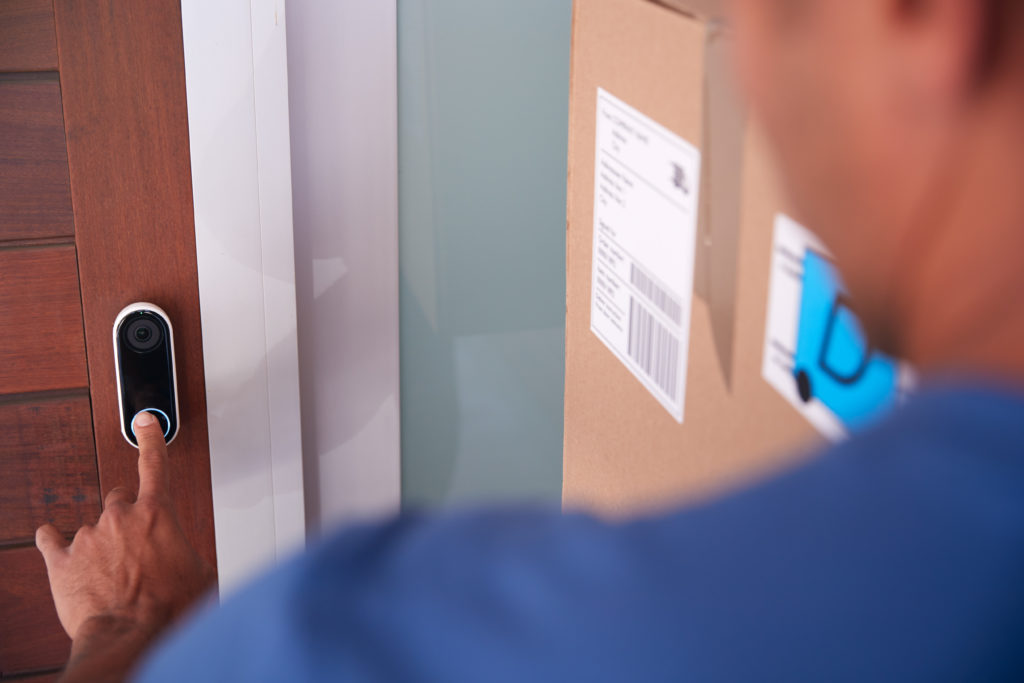
7. Smart Security
Smart security systems were one of the first smart home technologies on the market, and they’re still one of the most popular smart home features today. They come in a wide range of sophistication, from DIY to professional installation required.
If you are buying a home, however, keep in mind that some of the DIY-installed home security features—such as a ring doorbell—aren’t built into the home itself and likely won’t come with the house. More in-depth alarm systems that require professional installers—such as those from ADT, Vivint, or SimpliSafe—are more likely to be built-in (connected to the home’s wiring) and therefore more likely to be sold with the house.
Some of the most sought-after security features are indoor and outdoor cameras for video surveillance, doorbell cameras, smart door locks, motion-based security lights, and alarm systems for intruders. Some smart security systems also come with sensors to notify you of when an exterior door has been opened or if it has been left open.
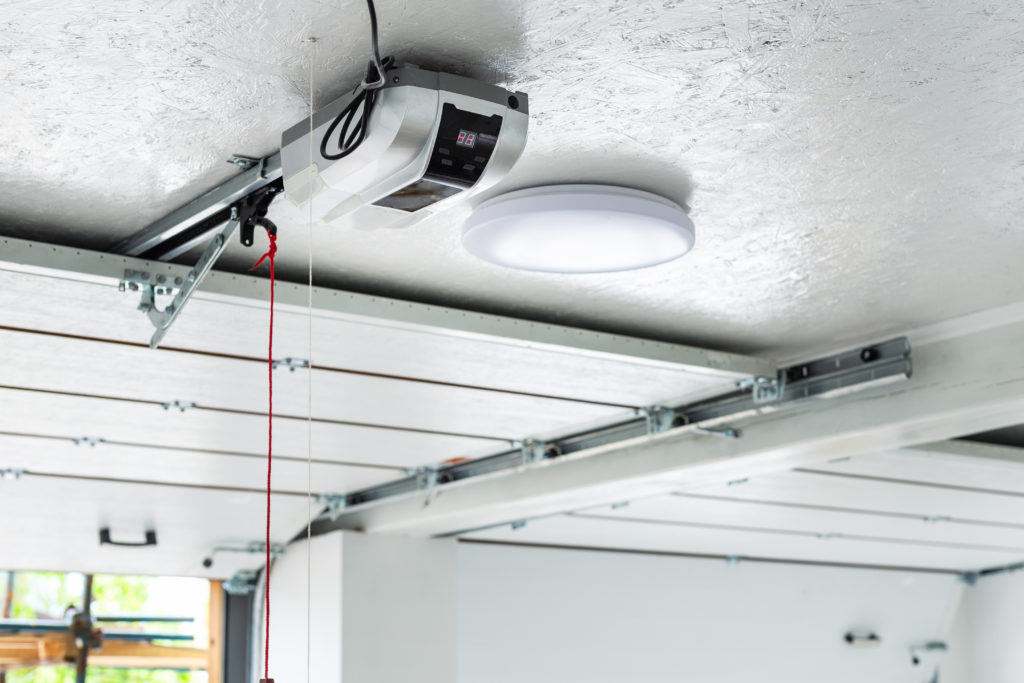
8. Smart Garage Door Openers
Though smart security for your front door is extremely popular, smart garage door openers are often overlooked. While some smart garage door devices work with your existing garage door opener, others have smart features built right into the opening mechanism itself. Get notified on your phone when your garage door opens, or when it’s been open for longer than usual. Don’t have your garage door remote handy? Can’t remember if you closed it after leaving your home? Control it from your phone! It’s equal parts convenience and safety.
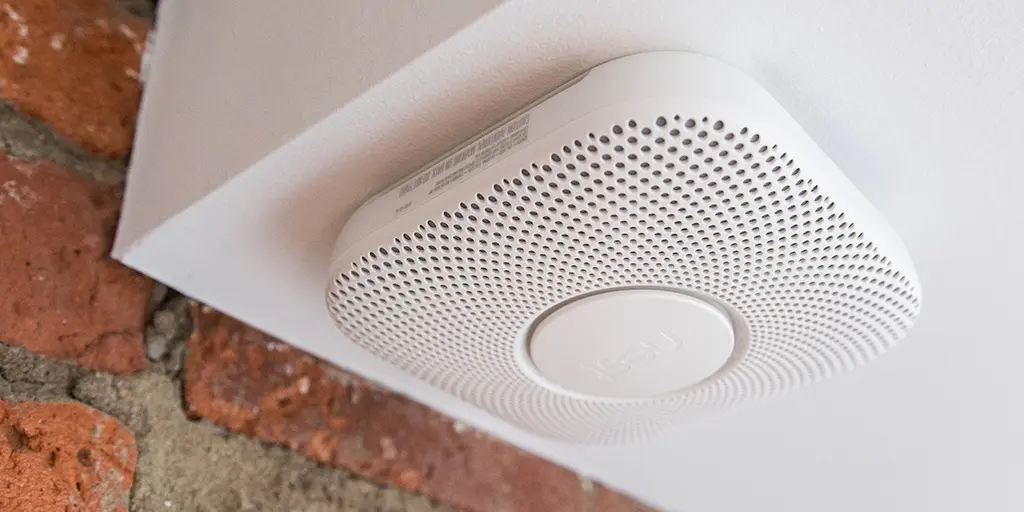 Photo Credit: NY Times
Photo Credit: NY Times
9. Smart Smoke and Carbon Monoxide Detectors
What if your smoke detector could alert you about smoke in your house, even when you’re not home? That’s exactly what a smart smoke detector does.
Another huge benefit of a smart smoke detector is that you’ll never have to worry about remembering to change the batteries again. Your smart detector can send you a notification reminder to your phone.
Smart detectors often have a multitude of other safety features built in, too. Self-testing capabilities help ensure the detector is performing in peak condition to keep you and your family safe. Some models shine a light when smoke is detected to help light a path in the case of an emergency or automatically turn off the furnace in the case of a fire. Others use voice alerts instead of a siren sound so as not to be alarming to children.
Many smart smoke detectors on the market also double as carbon monoxide detectors—a win-win.
Other Smart Home Devices
Want to make your home “smart,” but aren’t quite ready to commit to the more permanent smart home features? The following smart devices aren’t typically built into homes, so while they likely wouldn’t be included with a home when you purchase it, they can be added (or removed) easily at any time.
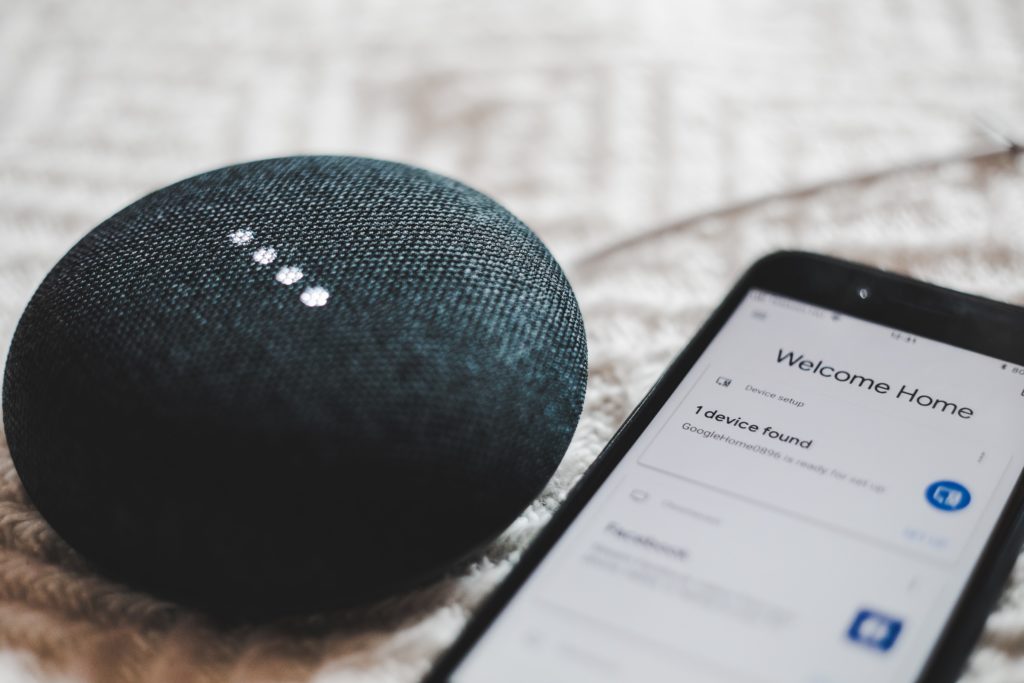
10. Smart Speakers
If there’s one common theme among almost all smart home devices, it’s their ability to connect to smart speakers. Smart speakers often serve as the “hub” of smart home technology. Aside from your smartphone, these speakers are how you control most of your other smart devices using voice commands.
Smart speakers are also the most widespread of any smart home technology. Twenty-five percent of American adults own a smart speaker—that adds up to 157 million smart speaker devices nation-wide.
The rise of smart speakers also means the rise of personal voice assistants. Alexa, Google, Siri, Cortana, and Bixby—all these voices are now a part of our everyday lives.
 Photo credit: Tech Radar
Photo credit: Tech Radar
11. Smart Frame Television
Love your large TV, but hate the way it detracts from your living room’s aesthetic? A smart frame TV is a perfect solution!
While these smart TVs do connect to the Internet, what sets them apart is their surface appearance. At first glance, smart frame TVs look like a framed piece of art. Turn it on, however, and what you thought was an art print suddenly becomes a TV screen. Turn it off, and the screen once again displays a piece of artwork, blending magically into your gallery wall or other decor. The ultra-thin design and high-res display makes the “disguise” extremely convincing. It’s technology hiding in plain sight!

12. Smart Mirrors
Imagine a mirror that lets you stream tunes while you’re in the shower, check the weather while you’re brushing your teeth, and adjust the lighting while doing your makeup. Sounds pretty awesome, right?
Smart mirrors are one of the more up-and-coming pieces of smart home tech, most commonly used in bedrooms or bathroom vanities. Smart mirrors designed for bathrooms often come with anti-fog technology. Many smart mirrors have a modern, futuristic look—a sheet of glass seamlessly doubling as a screen.
Smart workout mirrors are also booming in popularity. These high-tech mirrors offer workout programs where all you have to do is follow the on-screen instructor. From boxing to yoga to cardio, it’s like having your own personal trainer right in your home. Plus, you can use the mirror to compare your movements to theirs, making sure your form is correct.
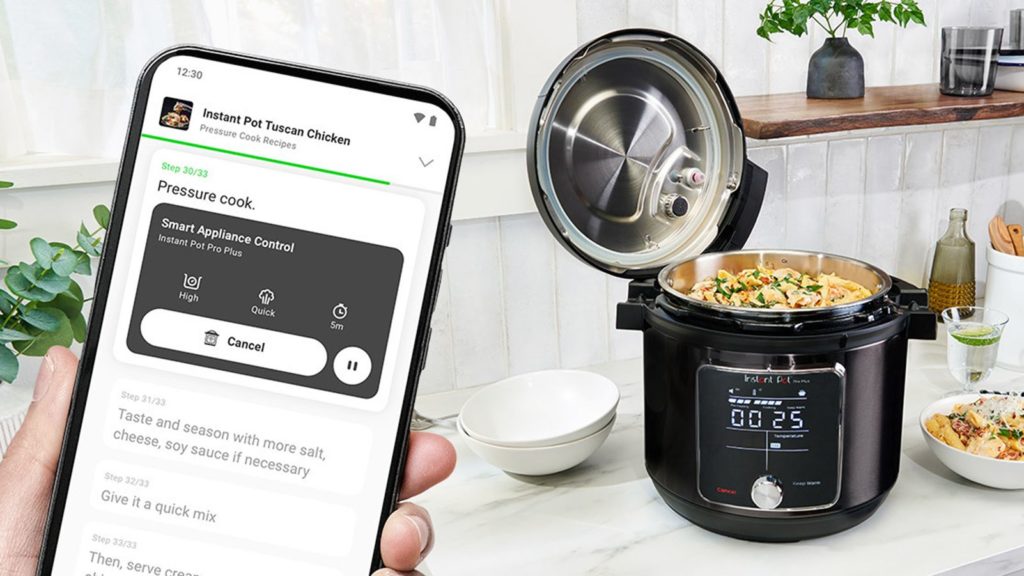 Photo Credit: CNN
Photo Credit: CNN
13. Countertop Appliances
We’ve already covered the major smart kitchen appliances—ovens, fridges, microwaves, and dishwashers—but there are plenty of countertop kitchen appliances that now have smart capabilities, too. Air fryers, coffee pots, toaster ovens, InstaPots—all of these are available in a “smart” version that can connect to WiFi. Imagine brewing a pot of coffee without lifting a finger!
Check out this blog for more innovative kitchen tech ideas.
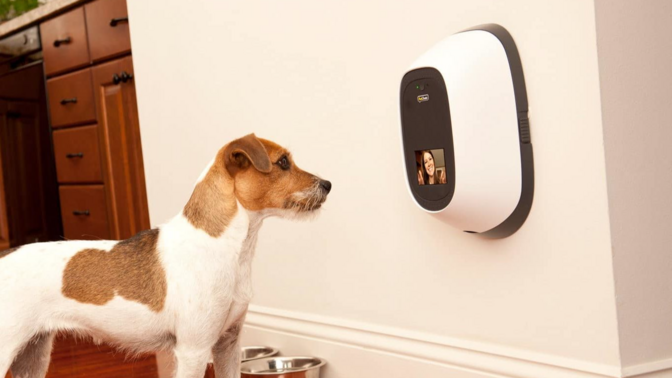 Photo Credit: Mashable
Photo Credit: Mashable
14. Pet Cameras
If you worry about your pet when you’re not home (who doesn’t?), a pet camera can help give you peace of mind. Pet cameras allow you to monitor your furry friends when you’re away from home. Bonus features often include one-way communication so you can speak to your pets from your phone. Higher-tech cameras have two-way communication so you can hear when your pet “speaks” back. Some models even let you throw your pets a treat with the push of a button on an app!
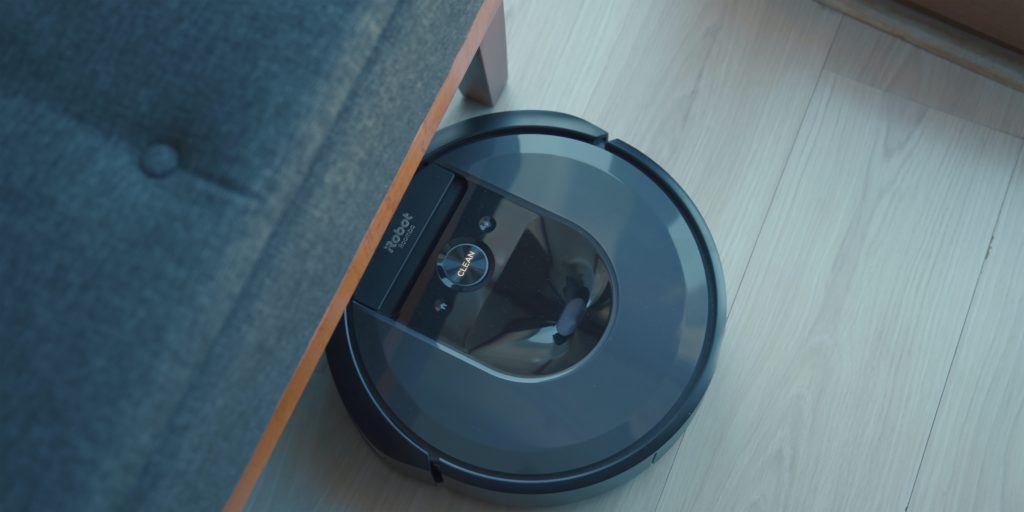
15. Robot Vacuums
Robot vacuums are the most popular smart cleaning device on the market, because—let’s face it—we could all use a helping hand when it comes to keeping our homes tidy. They often cover both hardwood and carpet flooring, reducing or completely eliminating the time you have to spend sweeping and vacuuming.
These smart vacuums are equipped with sensors that help them to redirect when they bump into something. Higher-end models vacuum back and forth in neat, straight lines, keeping track of where they’ve already been. Some of the highest-end models even allow you to program your home’s layout so that you can tell the vacuum to concentrate on a specific room.
One common feature that all robot vacuums share is their ability to connect to the Internet. You can schedule cleaning times, cancel cleaning jobs, and get alerts when your robot is stuck, all from your phone.
Smart Homes are the Future
Whether you’re all in on the latest smart home technology or prefer to give it a few years before you commit, smart homes and enhancements are here to stay. Our home’s “IQs” will only continue to increase as more and more household devices are able to connect to mobile apps or the Internet.
In the market for a new home? Reach out today! We can help you find the perfect place, whether it’s a high-tech smart home or a good, old-fashioned “non-smart” home.




